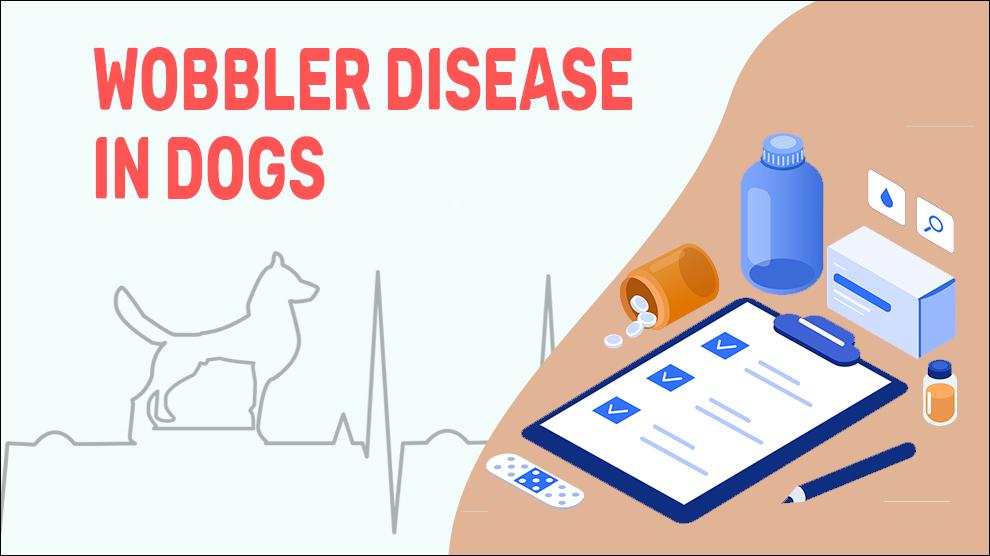What Is Wobbler Disease In Dogs?
Wobbler syndrome is an umbrella term for the neurologic disease of dogs with a number of conditions that affect the cervical spine of large and giant breed dogs. This condition is also called cervical vertebra instability (CVI), cervical malarticulation/malformation syndrome, and cervical spondylomyelopathy. The involuntary, progressive syndrome is caused by a compressed spinal cord and is characterized by a wobbly uncoordinated gait due to the dog's impacted hind legs.
In affected dogs, there can be several morphological problems of the neck bones. Most commonly, these abnormalities in these bones are prone to cause complications with the intervertebral discs, which deteriorate and extend beyond the spinal cord. Associated problems are spinal instability in the neck region and rash changes of the synovial joint that stabilizes the unit of the vertebral column (facet joints). These alterations can lead to more compression of the spinal cord.
Moreover, the different positioning of the neck affects spinal cord compression. Consequently in affected dogs, movement of the neck may result in recurring trauma to the spinal cord. Sometimes, these dogs may also be affected by spasms of the neck muscles.
There are 2 distinct categories of wobbler syndrome highlighted by differences in certain clinical features. Type I wobbler syndrome (or a young dog form) affects giant breeds early in life (4 – 12 months of age), but may not show signs until later. (Mastiffs, Great Danes, etc).
Type II wobbler syndrome (“disk-associated” form or a middle-aged form) affects large breeds such as the Bernese Mountain Dog and Doberman Pinschers. This type usually dogs manifests signs in early to mid-adulthood (3 – 8 years) but rarely will have signs in puppyhood.
Symptoms Of Wobbler Disease In Dogs
- Wobbly, staggering gait in the hind legs
- Rigid front legs with Short, choppy, or spastic stride
- Legs spread out for better balance
- Muscle loss near the shoulders
- May collapse or buckle if the neck is protruded
- Head held downwards.
- Quadriplegic (often a result of trauma)
- Shivering
- Turning will often cause the dog to fall over in the back end
- Difficulty getting up from a lying position
Treatment Options For Wobbler Disease In Dogs
NSAIDs: Rimadyl, Previcox, Deramaxx, Galliprant, Metacam
Opioids: Morphine, hydromorphone, butorphanol, codeine, fentanyl, and buprenorphine
Ventral decompression: This is the most popular surgical procedure for cervical spine disc herniation. The technique is performed from the ventral (underside) of the neck, in which intervertebral discs are found. Through the center of the disc, a tiny hole (slot) is pierced and through a small section of the nearby vertebrae, the spinal canal at the site of the herniated disc is examined. Any free fragments of broken or herniated disc material are removed from the spinal cord.
Vertebral distraction/fusion: This type of surgery allows graft insertion and increases surgical exposure for subsequent decompression
Dorsal decompression: The approach is performed from the dorsal side of the neck
Home Remedies For Wobbler Disease In Dogs
- The wobblers disease treatment provided these days is to decrease the incidence and severity of the tremors.
- The dog can continue to lead a healthy life with regular follow-ups by your vet.
How To Prevent Wobbler Disease In Dogs?
After diagnosis with wobbler syndrome, it is significant to take action to stop breeding the dogs so as to remove suspected dogs from the gene pool.
Affected Dog Breeds Of Wobbler Disease
Large Dog Breeds, Giant Dog Breeds, Doberman, Weimaraner, Great Dane, Rottweiler, Dalmatian, Borzoi, Basset Hound, Bernese Mountain Dog, German Shepherd, Irish Wolfhound, Mastiff
Causes And Types For Wobbler Disease In Dogs
1. Causes:
- Inherited/Congenital condition
- Conformation of the neck-shoulder tie
2. Types:
- BACS: Bony-Associated Cervical Spondylomyelopathy form. A bony abnormality causes the spinal cord and nerve compression. This is most common in giant-breed dogs, usually young adults < 3 years of age. The breeds most generally affected are Great Danes and Dobermans.
- DAWS: Disc-Associated Wobbler Syndrome form. In this type, a dog suffers an inter-vertebral disc herniation which means a “slipped disc.” Most commonly, this type is found in giant-breed dogs >4 years of age.
3. Mortality:
Wobblers syndrome itself is not usually considered to cause death but is usually more of a causal factor for other health complications.
4. Diagnosis:
- Complete blood count (CBC), an electrolyte panel, and a urinalysis
- Tissue sample (biopsy)
- Ultrasound
- Electrophysiology
5. Prognosis:
The prognosis for dogs with wobbler syndrome is determined by the severity of the condition. Dogs with mild symptoms after surgery have a high chance of recovery, but in advanced cases, dogs may never walk normally again, regardless of the outcome of surgery. Following surgery, if the severely affected dog gains better motor function and regular recovery, it may need months of intensive physical therapy. However, owners should try to find treatment to lessen as much of their dog's pain as possible.
When To See A Vet For Wobbler Disease In Dogs?
Contact your vet right away, if you notice any of the following:
- Wobbly, staggering gait in the hind legs
- Rigid front legs with Short, choppy, or spastic stride
- Legs spread out for better balance
- Muscle loss near the shoulders
Food Suggestions For Wobbler Disease In Dogs
- High-quality protein (lean beef, seafood, peanut butter, Cottage Cheese, lentils, eggs)
- Leafy greens (collard greens, Kale, spinach, lettuce)
- Essential fatty acids (salmon, whitefish, mackerel, cod, tuna, herring, sardines, trout, etc)
- Plant-based proteins: Chickpeas, Peanuts, lentils, Sprouted Whole Grain Bread, etc
- Antioxidants: Blueberries, Raspberries, Strawberries, Cranberries, Steamed broccoli, Cooked yellow squash, Red cabbage, etc
Conclusion
Although Wobbler disease is curable, most dogs require a combination of medication and special feeding. Pets can live a longer, quality life with the right supportive care and medications.

















